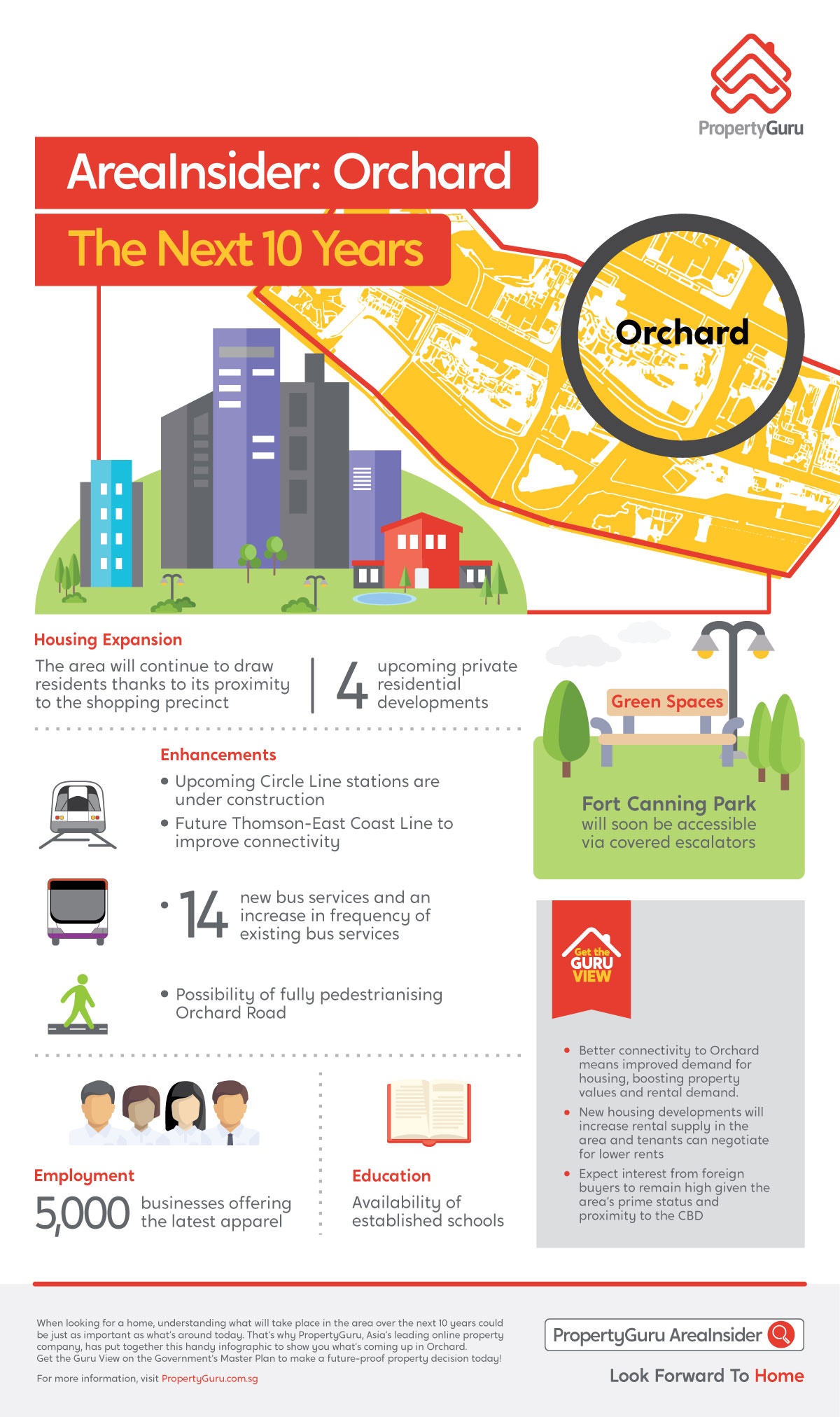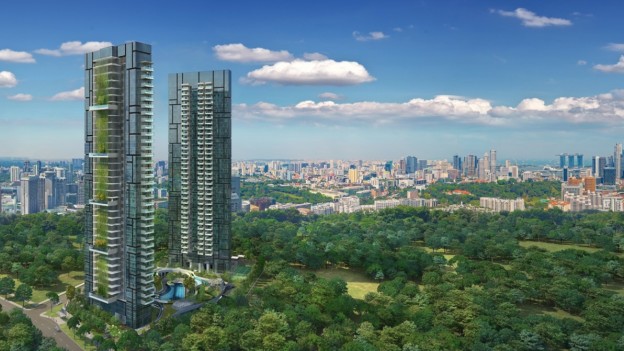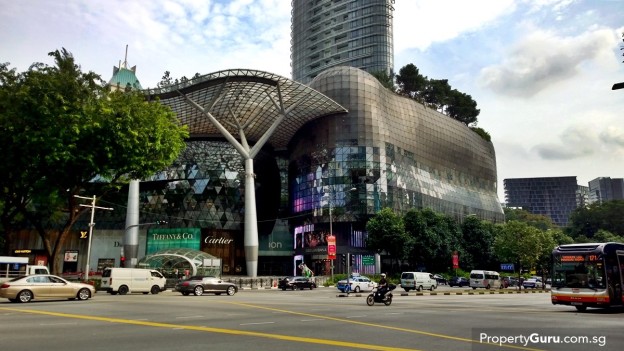Orchard Road in Singapore has made a name for itself in the region as a shopper’s paradise. The strip is lined with glitzy malls hawking everything from the latest high-fashion designer labels to independent brands.

The Orchard district also happens to be one of the priciest and most sought-after residential areas in Singapore.
In this article, we explore the past, present and the Master Plan for Orchard, which will continue to drive property values in one of Singapore’s most prestigious districts.
History of Orchard
The area’s main thoroughfare, Orchard Road, received its name from its past incarnation as boulevard lined with fruit orchards, farms and plantations teeming with nutmeg and pepper.
Its transformation into a shopping district began in 1903, with the opening of the first Cold Storage outlet in Singapore. This was followed in 1958 by the opening of the area’s first department store, which lives on in today’s TANGS.
By the seventies, the Orchard area had become Singapore’s main retail hotspot, with entertainment infrastructure such as bowling alleys and cinemas cementing its status.
In 1974, Plaza Singapura became the first of many high-rise shopping malls to grace Orchard Road, a harbinger of the area’s present-day glory.
What’s in Orchard
The Orchard Road of today is a massive shopping, dining and entertainment precinct, with over 5,000 businesses offering everything from edgy designer apparel to bespoke cocktails. Mega-malls such as ION Orchard, Mandarin Gallery and Paragon compete to outshine each other as tourists, residents and locals from other areas flood the streets on weekends.
With all the hustle and bustle, it is easy to forget that Orchard Road is also a residential district with neighbourhood amenities that serve a mostly wealthy clientele.
One of the neighbourhood’s best-loved facilities is Library@Orchard, set up by the National Library Board. The library was given a face-lift and relocated to shopping mall Orchard Gateway in late 2014. The designed-theme library, which is composed of two floors, has been outfitted with ultra-modern furnishings and is worth a visit just to test-drive its futuristic reading nooks.
As one of Singapore’s major shopping districts, Orchard Road is extremely well-connected by public transport. It is served by the North-South Line on the MRT network via Orchard, Somerset and Dhoby Ghaut MRT stations. Accessibility to the CBD is quick and easy by MRT, with Raffles Place MRT station being just two stops away from Dhoby Ghaut station on the North-South Line, about a 7 minute ride away.
The North-East Line on the MRT network serves Orchard Road via Dhoby Ghaut MRT station, which also serves as an interchange for those wishing to connect to the North-South Line. It connects commuters from Orchard to major tourist and entertainment districts Clarke Quay and Chinatown in minutes, the MRT stations for both stops being just one and two stops away from Dhoby Ghaut Station respectively.
Finally, Dhoby Ghaut station also serves as interchange and terminus for the Circle Line, connecting commuters to the Bishan, Farrer Road and Telok Blangah area.
Despite having been in use for years, the Circle Line is not yet complete, with the final stations Keppel, Cantonment and Prince Edward still under construction. When they are completed, the Circle Line will enable commuters to travel in a loop, offering commuters greater choice when travelling to Dhoby Ghaut from areas such as Pasir Panjang or Holland Village.
Looking for a property in Orchard? Find an agent to take the hassle out of your home search.
The Master Plan for Orchard
The URA is constantly thinking of ways to keep the central districts, including Orchard, fresh and interesting for visitors and locals alike. The design of public spaces is constantly being rethought, with pedestrian links to neighbouring areas prioritised. For instance, Fort Canning Park will soon be accessible from Jubilee Park via covered escalators, as well as from Stamford Green.
The possibility of fully pedestrianising Orchard Road is being studied in hopes that this could lead to the space being used for events. This comes after several efforts to host Pedestrian Night initiatives, which took place from 2014 to 2016.
Connectivity to the Orchard area will be enhanced even further when the Thomson-East Coast Line opens in stages beginning in 2019. It will connect commuters from the existing Orchard MRT station and new station Orchard Boulevard to areas such as Shenton Way, Bedok South, Upper Thomson and Woodlands.
Enhancements to the bus network are also in the works, and will offer better connectivity between the city area and major towns in Singapore, including 14 new parallel bus services and an increase of 15% over the 160 basic bus services currently in operation.
At the same time, redevelopment is slated to happen in the near future, with a number of en blocs and land sales that will bring new developments to the area over the next five years.
Get the Guru View
Orchard’s status as Singapore’s prime residential district is unlikely to change in the near future, with drivers such as medical suites, elite and intentional schools, and the shopping precinct continuing to support price levels for property.
New infrastructure development, including the Thomson-East Coast line, which will one day connect to JB Sentral, will bring Malaysian daytrippers into the area, providing a further boost to the retail and entertainment outlets in the area.



